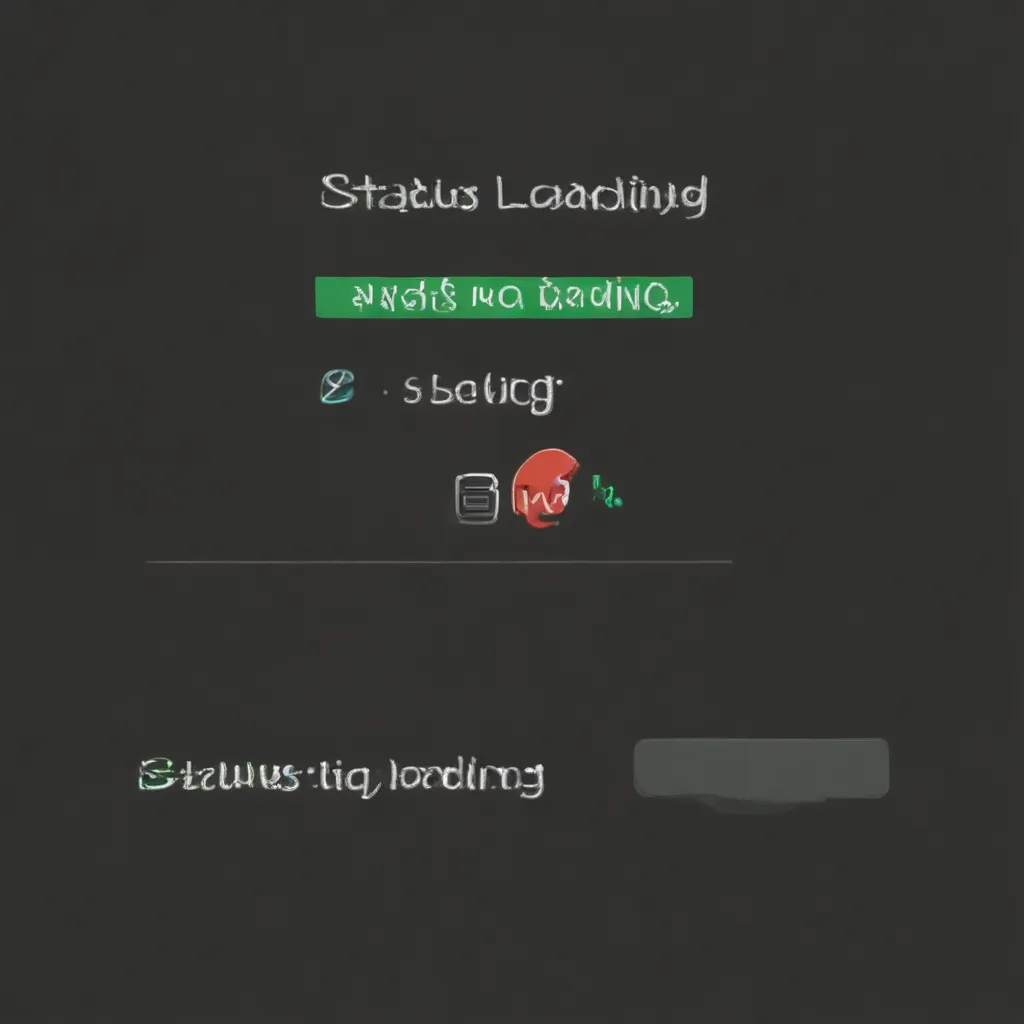
The Dreaded Loading Screen
We’ve all been there – eagerly clicking a link, waiting with bated breath for the page to load, only to be greeted by that dreaded, spinning loading icon. It’s a moment of pure, unadulterated frustration, as we helplessly watch the seconds tick by, our patience wearing thinner with each passing moment.
As a web designer, I’ve seen my fair share of loading screens. It’s one of those unavoidable realities of our digital world, a necessary evil that we must confront head-on. But what if I told you that the humble loading screen is more than just a nuisance? What if I revealed to you the hidden depths and complexities that lie beneath its seemingly simplistic surface?
The Importance of Loading
In today’s fast-paced, attention-deficit world, the loading screen has become a critical component of any successful website or web application. It’s not just about keeping users engaged while the content is being fetched – it’s about managing their expectations, setting the tone for the entire experience, and ultimately, ensuring that they stick around long enough to see what you have to offer.
Think about it – when you’re browsing the web, how often do you find yourself immediately clicking away from a site that takes too long to load? Chances are, it’s more often than you’d like to admit. The loading screen is the first impression your users will have of your platform, and it can make or break their decision to stick around.
The Art of Mastering the Loading Screen
Crafting the perfect loading screen is a delicate balance of form and function. It’s not enough to simply throw up a generic spinner and call it a day. No, the true masters of web design understand that the loading screen is an opportunity to engage and delight their users, to build anticipation and set the stage for a truly remarkable experience.
One of the keys to success is understanding your audience. What kind of users are you catering to? What are their expectations and pain points? By tailoring your loading screen to the specific needs and preferences of your target demographic, you can create a seamless, user-friendly experience that keeps them coming back for more.
Incorporating Storytelling
But the true magic happens when you start to infuse your loading screen with a sense of narrative. Think about it – why should your users be content with a boring, static spinner when you could transport them to a whole new world while they wait?
Imagine a loading screen that takes the form of a mini-game, where users have to navigate through a surreal, dreamlike landscape as they wait for the page to load. Or maybe you could incorporate subtle animations that tell a story, gradually revealing snippets of information or teasing the user about what’s to come.
The possibilities are truly endless, and the impact can be profound. By engaging your users on an emotional level, you’re not just keeping them entertained – you’re building a connection, a sense of investment in the overall experience. And that, my friends, is the key to creating a truly unforgettable web presence.
The Importance of Feedback
Of course, the loading screen isn’t just about aesthetics – it’s also a crucial tool for providing feedback to your users. After all, there’s nothing worse than staring at a blank screen, unsure of whether the page is still loading or if something has gone horribly wrong.
That’s why it’s so important to incorporate clear, intuitive feedback mechanisms into your loading screens. Whether it’s a progress bar, a percentage indicator, or even a dynamic, contextual message, your users need to know that the system is working as intended, and that their patience will be rewarded.
But feedback isn’t just about the loading process itself – it’s also about setting expectations and managing the user’s mental model. By providing clear, transparent information about the loading process, you can help to reduce frustration and keep your users engaged, even in the face of long wait times.
Embracing the Unexpected
At the end of the day, the true magic of the loading screen lies in its ability to surprise and delight. Sure, you can stick to the tried-and-true methods – the classic spinners and progress bars. But why settle for the mundane when you can push the boundaries of what’s possible?
Think outside the box. Experiment with interactive elements, unexpected animations, or even quirky mini-games. The key is to keep your users engaged, to give them a reason to stick around and see what happens next.
And who knows – maybe, just maybe, you’ll stumble upon a loading screen that becomes so iconic, so memorable, that it becomes an integral part of your brand identity. After all, in a world where attention is the most valuable commodity, anything that can help you stand out from the crowd is worth exploring.
The Future of Loading
As technology continues to advance, the role of the loading screen is only going to become more important. With the rise of mobile devices, lightning-fast internet speeds, and the ever-growing demand for instant gratification, the need to captivate and engage users during those precious moments of waiting has never been greater.
But the future of the loading screen isn’t just about keeping users entertained – it’s about leveraging that time to provide genuine value. Imagine a loading screen that uses machine learning to personalize the experience, tailoring the content and animations to the individual user’s preferences and interests. Or what about a loading screen that seamlessly integrates with the rest of the web experience, providing contextual information or even allowing users to complete small tasks while they wait?
The possibilities are truly endless, and the brands that are able to harness the power of the loading screen will be the ones that come out on top in the ever-evolving landscape of web design and development.
Embracing the Humble Loading Screen
So, the next time you find yourself staring at that spinning icon, take a moment to appreciate the hidden complexity and potential that lies within. The loading screen may be a humble, oft-overlooked element of web design, but in the hands of a true master, it can become a powerful tool for engaging, delighting, and captivating your users.
After all, in a world that moves at the speed of light, the ability to command attention and keep your audience engaged is a true superpower. And when it comes to the art of web design, the humble loading screen may just be the secret weapon you’ve been looking for all along.
So, what are you waiting for? It’s time to let your creativity run wild and see what you can create. Who knows – your next loading screen might just become the stuff of legend.





